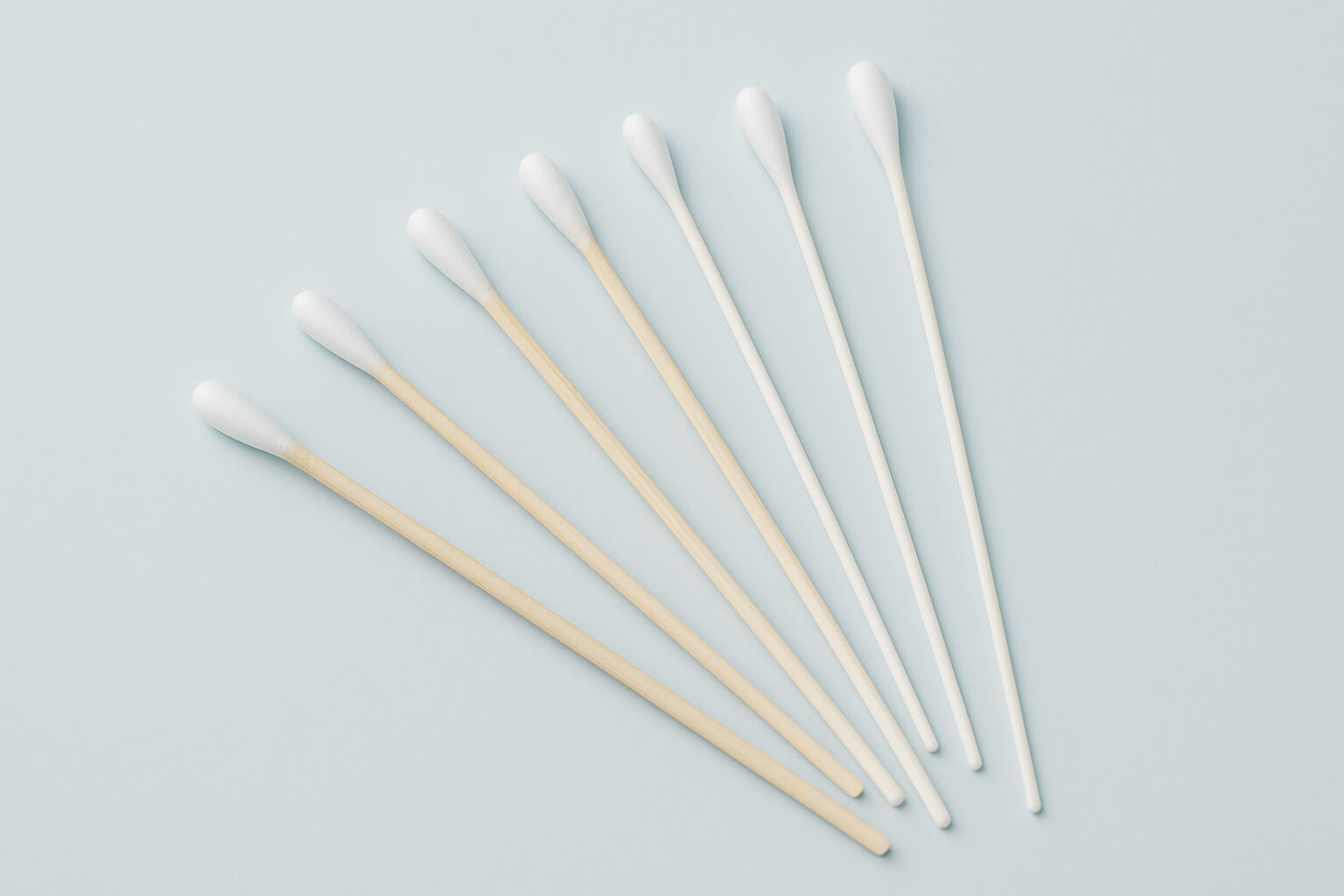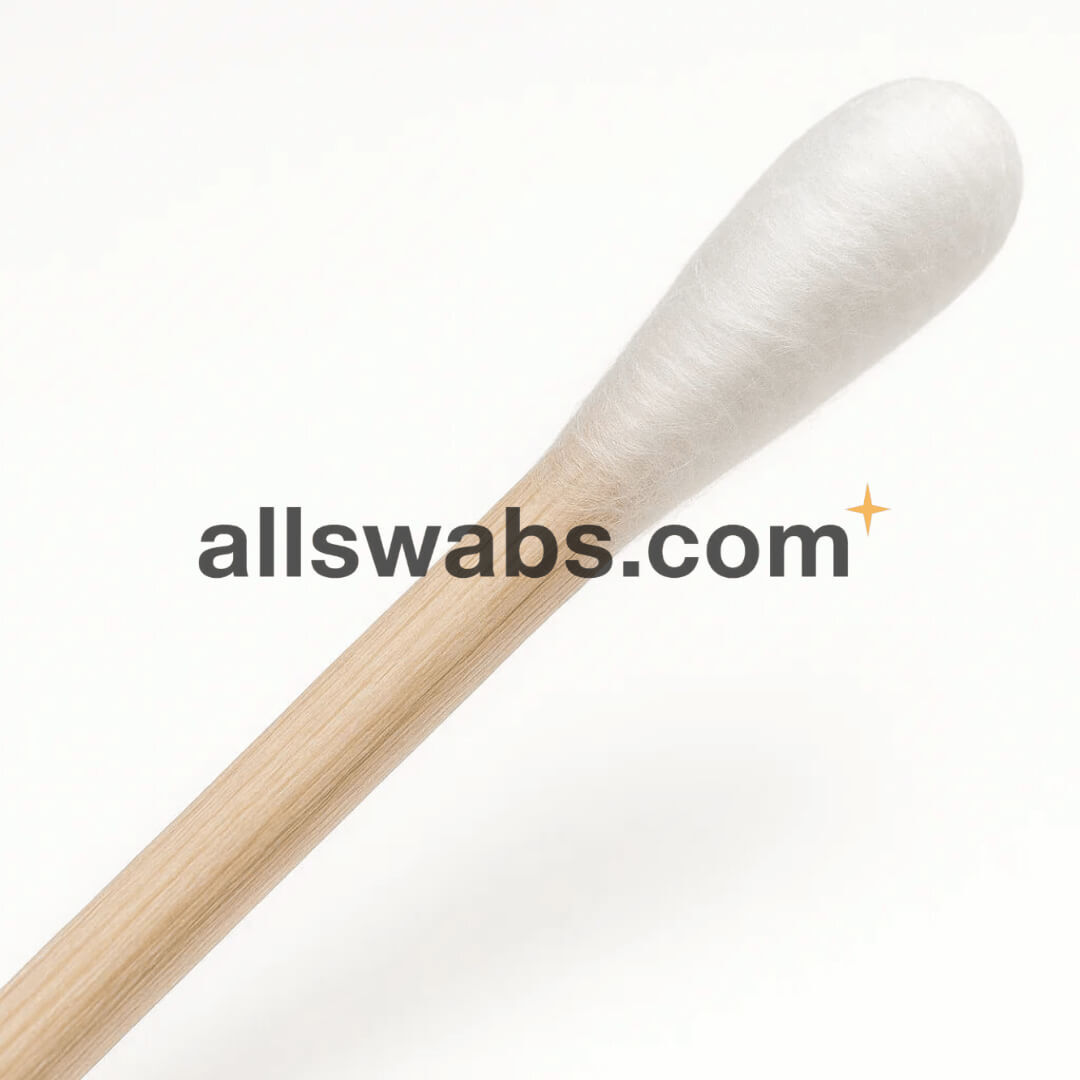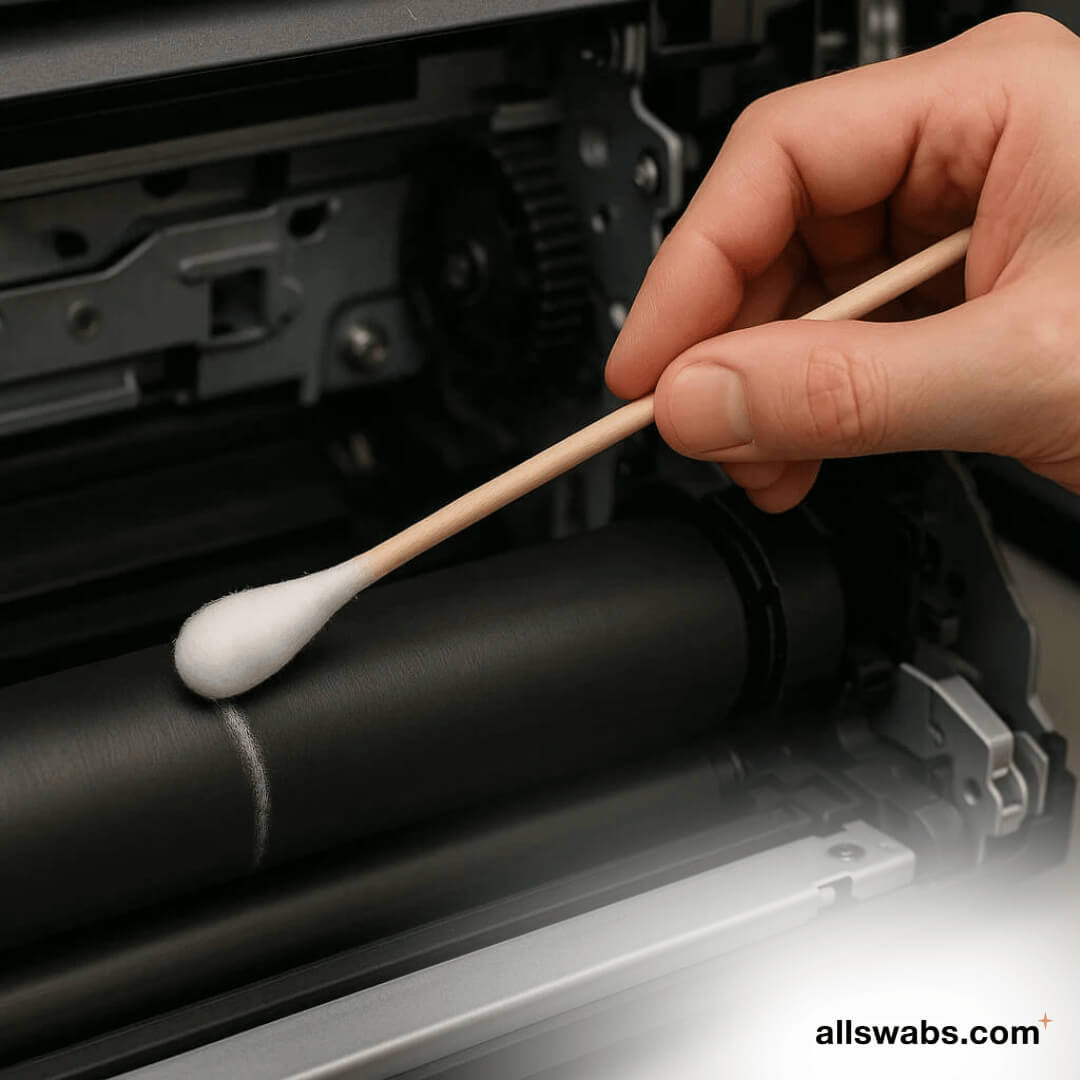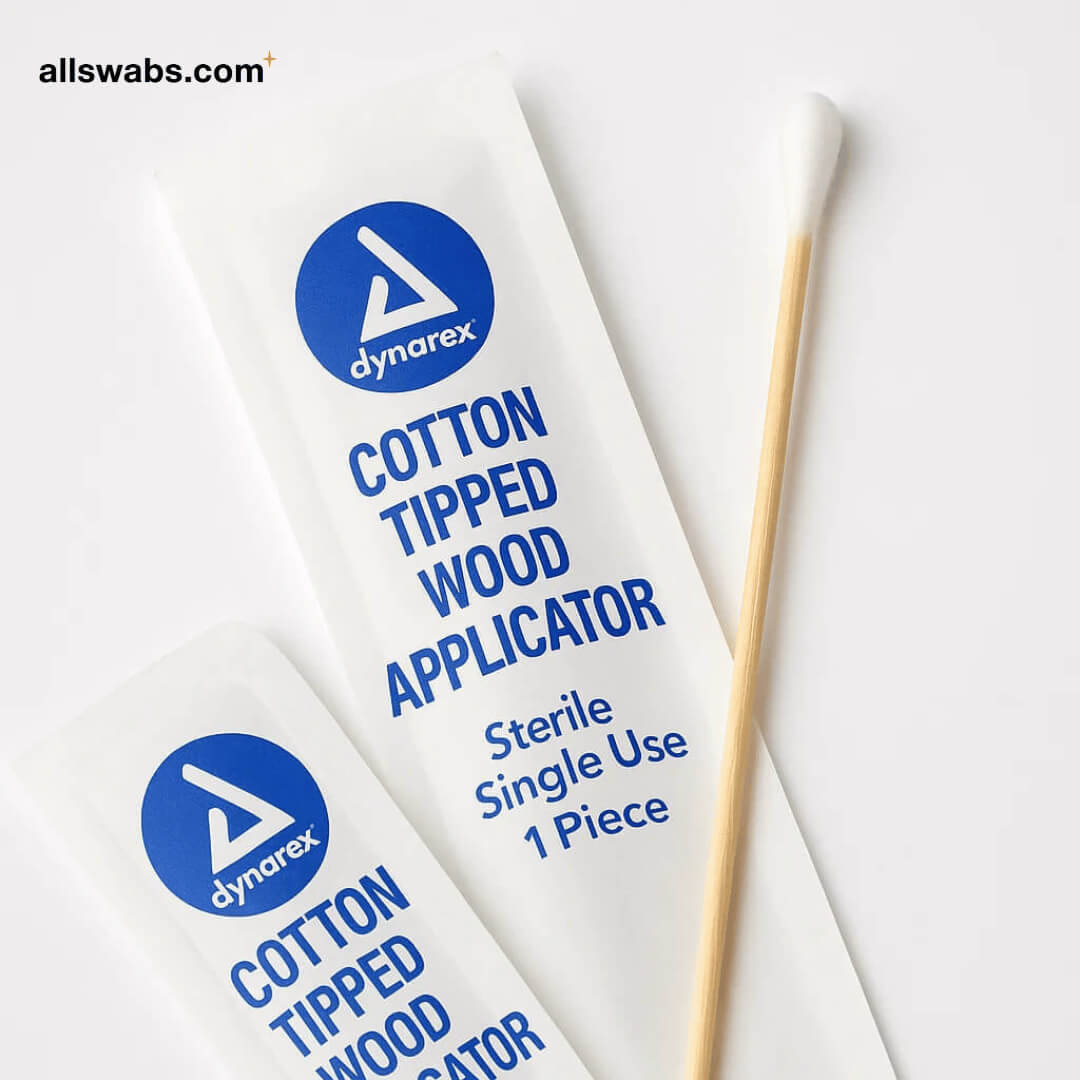Best Long Cotton Swabs (Buyer’s Guide & Top Picks)
Published by AllSwabs.com on May 28, 2025
Whether you’re cleaning delicate electronics, collecting lab specimens, detailing models, or maintaining firearms, long swabs give you the reach and absorbency short applicators can’t match. This guide reviews three industry‑leading cotton swabs, explains what to look for when buying, and answers the questions professionals ask most.

Quick Comparison Chart
| Product | Length | Tip Size / Shape | Sterile | Shaft Material | Best For | Buy |
|---|---|---|---|---|---|---|
| Puritan 806‑WC | 6″ | Regular cotton | No | Wood | Specimen collection, wound care | View |
| Puritan 808 Jumbo | 8″ | Oversize cotton | No | Wood | Gun barrels, printer rollers | View |
| Dynarex 4304 | 6″ | Regular cotton | Yes (EO) | Wood | Medical, tattoo, lab culture | View |
| Puritan 821‑WC‑DBL | 6″ | Tapered & regular cotton | No | Wood | Dual-tip versatility: medical, detailing, electronics | View |
Top 3 Long Swabs (Hands‑On Reviews)
1. Puritan 806‑WC 6″ Cotton Swab

Why we like it: Pharmaceutical‑grade cotton tightly wound on a rigid 6‑inch wood shaft gives you excellent control for specimen collection, wound cleaning, or delicate mechanical cleanup.
- Pros: economical bulk packs; smooth, splinter‑free shaft; made in the USA.
- Cons: non‑sterile (requires autoclave or EO if asepsis is critical).
Check current price & pack sizes »
2. Puritan 8″ Jumbo‑Tip Cotton Swab

Why we like it: Two extra inches of reach plus a jumbo tip soak up solvents and cover more surface area—perfect for firearms, 3D‑printer nozzles, and industrial equipment.
- Pros: long rigid handle; high absorbency; lint‑free when saturated.
- Cons: too large for tight micro‑electronics; non‑sterile.
3. Dynarex Sterile 6″ Long Cotton Swab (4304)

Why we like it: Individually pouched and EO‑sterilized, these swabs meet medical and tattoo‑shop protocols right out of the box.
- Pros: ready‑to‑use sterility; lot‑numbered for traceability; smooth wooden shaft.
- Cons: higher cost per piece than bulk non‑sterile options.
4. Puritan 821‑WC‑DBL Dual‑Tip Cotton Swab

Why we like it: This dual‑tip swab gives you options—use the fine tapered tip for tight spots and the regular tip for general application. High‑grade U.S. cotton on a 6‑inch wood shaft makes it a smart choice for labs, detailing, and industrial cleaning.
- Pros: two tips in one tool; solvent‑compatible; seamless cotton winding; made in USA.
- Cons: non‑sterile; not ideal for single‑tip precision tasks.
Buying Guide: How to Choose the Right Long Swab
Length & Reach: Six‑inch shafts handle most lab and medical duties, while eight‑inch or longer swabs excel in barrels, ducts, and recessed cavities.
Shaft Material: Wood offers rigidity and heat resistance; paper shafts are economical and biodegradable; polypropylene resists chemicals but can be flexible.
Tip Diameter & Shape: Regular tips suit general work. Jumbo tips absorb more fluid, while mini or pointed tips access fine crevices.
Sterility Requirements: Clinical, tattoo, or culture collection demands sterile swabs; industrial cleaning typically does not.
Lint & Residue: Medical‑grade cotton sheds less lint. Foam or polyester tips leave no fibers but may cost more.
Budget & Pack Size: Bulk non‑sterile swabs run pennies each; sterile, individually wrapped swabs cost more but save prep time.
5 Practical Uses for Long Swabs
- Precision Electronics Cleaning — remove flux or dust inside keyboards and circuit boards.
- Medical & Diagnostic Sampling — collect throat, nasal, or wound cultures without contamination.
- Arts, Crafts & Model Detailing — apply paint, stain, or adhesive in tight spots.
- Firearm Maintenance — swab carbon buildup from chambers and barrels.
- Cosmetics & Personal Care — reach piercings or apply ointment to sensitive areas.
Maintenance & Safety Tips
Store swabs in a clean, dry container to keep lint at bay. Handle sterile swabs only by the shaft to maintain asepsis. Dispose of used swabs in accordance with biohazard or solvent‑waste regulations. Wood shafts are biodegradable; plastic shafts may be recyclable depending on local rules.
FAQs About Long Swabs
Can I sterilize non‑sterile cotton swabs at home?
Yes. Autoclaving at 121 °C for 15 minutes or exposing the swabs to ethylene‑oxide gas will render them sterile, but confirm your procedure meets your facility’s validation requirements.
Are wooden shafts safe to use with solvents?
Most mild solvents are fine, but strong acids, bases, or prolonged acetone exposure can weaken wood. For aggressive chemicals, polypropylene‑shaft swabs are safer.
What’s the difference between cotton and foam long swabs?
Cotton is naturally absorbent and economical but can shed tiny fibers. Foam swabs release liquid more evenly and leave virtually no lint, making them ideal for optics and sensitive electronics.
How long must a swab be to qualify as a “long swab”?
There’s no universal ISO spec, but in industrial and medical supply catalogs, any swab 6 inches (15 cm) or longer is generally marketed as a long swab.
Final Verdict
The Puritan 806‑WC offers unbeatable value for everyday sampling and cleanup, the Puritan 8″ Jumbo dominates heavy‑duty applications with its extra reach and absorbency, and the Dynarex 4304 is our go‑to when sterility is non‑negotiable. Together, these three options cover 90 % of professional needs. Ready to upgrade your toolkit?

